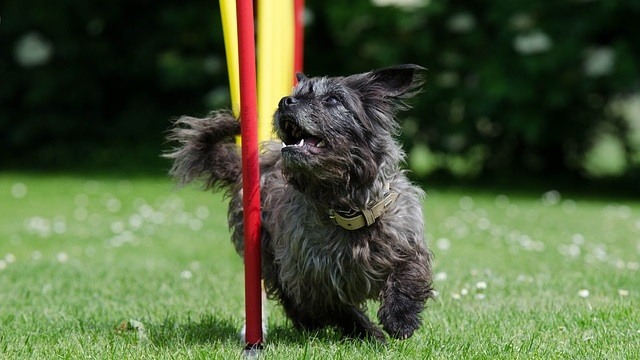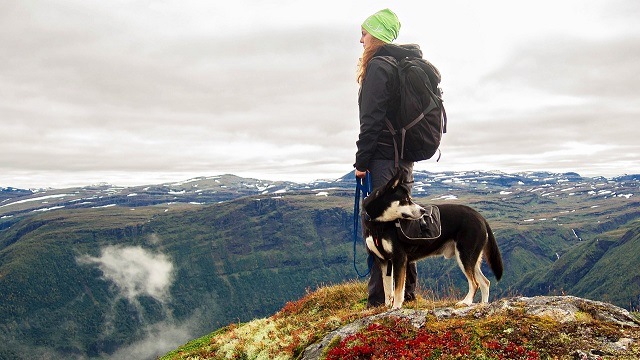Agility Training for Dogs and Cats
If done right, agility training for dogs and cats can improve both pet and owner’s health and emotional balance. When it comes to our canine friends, an agility course is basically an obstacle course meant for dogs. The dog has to run through tunnels, leap over jumps and weave through poles, all side-by-side with their human friend. It’s one of the most popular sports involving animals around the world, and it’s surely a thrill to watch!
However, canines aren’t the only ones who deserve some fun. As exquisite jumpers and natural sprinters capable of learning the lesson pretty quickly, cats can master this activity too! However, cat agility isn’t very well-known around the globe yet. It dates from the early 2000s and was primarily developed in the United States, making it a more common sport in North America.
- Agility training enhances pets' physical and mental well-being, improving health and emotional balance for both pets and owners.
- Training can help boost pets' confidence, strengthen natural instincts, and enhance the bond between owner and pet.
- Safe training is crucial; start small and ensure equipment is suitable for your pet's abilities and health conditions.
- Creating a DIY agility course keeps the experience fresh and enjoyable, allowing for creative and engaging training sessions.
Getting Started

From Border Collies to Chihuahuas, Maine Coons or any mixed-breed specimen, all breeds are accepted when we’re talking about Agility. All that matters is that both pet parent and pet enjoy themselves while practicing it.
The ideal time to start training your buddy is while they’re growing. This takes advantage of their youthful boundless energy, their built-in hunting instinct and their mesmerising ability to learn.
Older pets might need a bit more encouragement to get off the couch and set new habits. The trick is to find the right motivation, like their uttermost favorite toy!
Start by getting your pet’s attention, whether it is by means of a treat or a toy. Running around the house or the yard with the desired titbit will incite your pet to chase you, which is the main lead for any agility training. Whenever your buddy shows signs of being tired or losing interest, it’s time to rest – stop for a while and come back to it later.
Benefits of agility training for dogs and cats
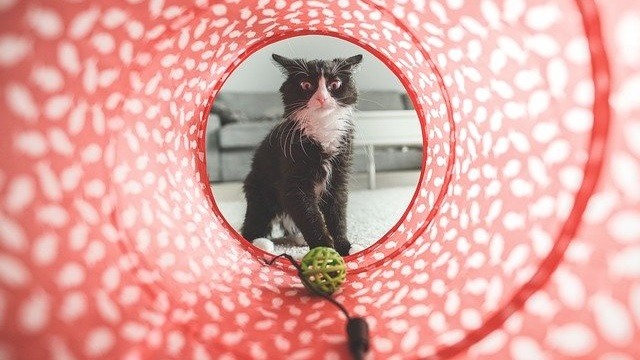
There is no need to participate in agility competitions if that’s not your thing. You can create your own agility course and still benefit from everything this sport has to offer!
Before we get to that, here are some of the benefits you can expect from agility training for dogs and cats:
1. Release of physical and mental energy
Agility training is great for helping your pet release energy in a safe and fun way, as it allows them to run at full speed while focusing on a task. This sport not only enhances the body by helping build lean muscle, strengthen joints and improve coordination, but also exercises the mind. It’s a great way to prevent boredom and provide emotional support, which will help keep your buddy healthier and happier.
2. Boost of confidence
The variety of courses and difficulty levels is so wide that it may be a powerful resource for dogs or cats to get over fears of unusual surfaces, small spaces or scary situations. The confidence built while practicing agility can be applied to any daily situation, making it easier for pets to cope with new events, like meeting new people and other pets.
The best thing is that you will also benefit from your furry friend’s confidence. Your trust will increase as both you and your pet learn what to expect from each other… Which is a great asset when managing new encounters and events that usually trigger stress.
3. Strengthening of the pet’s natural instincts
Running over and under obstacles of many shapes and sizes, changing directions and focusing on a goal, are ways of mimicking what nature has to offer. Running an agility course strengthens the goal-oriented instinct and builds the dog and cat’s natural drive.
4. Enhanced bond between owner and pet
Agility trials require you to work very closely with your buddy. This has been proven to promote a closer connection, as long as the time spent exercising is a quality one!
Safety first
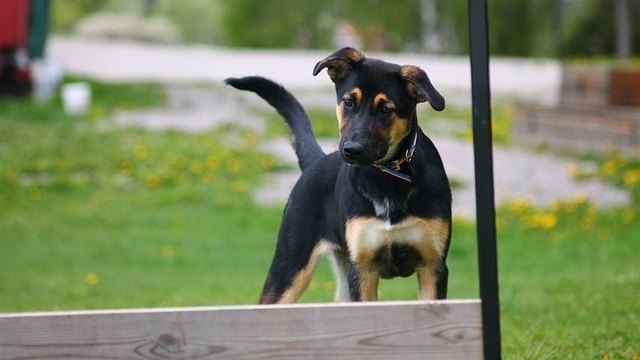
No matter the amount of benefits agility training may bring, if it’s not done in a safe environment, it may become a serious hazard to your best friend.
The first rule is to avoid challenging your pet beyond their ability. Start with small jumps and simple obstacles to build their confidence and prevent accidents.
Be aware that all the elements from the course should be breathable, lightweight and collapsible, with no sharp edges.
Last but not least, acknowledge your pet’s limitations and medical conditions. Do not put them through an obstacle course without talking to your vet or one of Maven’s health specialists first.
Build your own agility course – DIY tips
Here are a few basic elements that you can easily prepare for agility training for dogs and cats. If you switch up the route and type of obstacles every once in a while, you will keep things fresh and thrilling for a long time.
1. Weave Poles
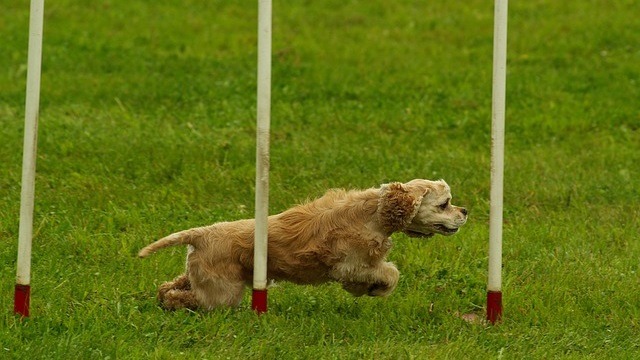
Weaving back and forth through the row of upright poles works the dog or cat’s flanks, and the overall joints and muscles. When it comes to cats, weave poles are one of the most advanced obstacles. Try using water bottles or attaching PVC pipes onto a piece of plywood. For dogs, use holiday lawn decor, like candy canes or PVC pipes, placed firmly in the ground. If you want to avoid putting holes in your lawn, try using orange construction cones staggered in a zig-zag pattern to create a path your dog can weave through.
2. Tunnels
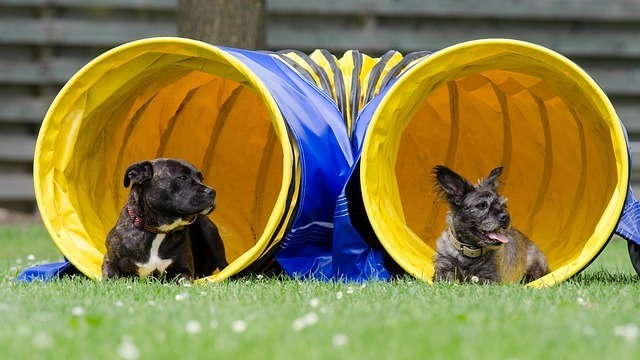
You can use children’s play tunnels as doggie tunnels, as long as they are the right size and adequately stabilized. You can easily buy one of these for a small upfront cost.
Tables pushed together can also serve as a tunnel if you’re in a pinch. To create that sought-after tunnel effect, drape a floor-length tablecloth or old sheet over the two sides.
Cats enjoy tunnels as well, and a paper bag is enough to build one. Cut off the bottom of a bag and turn it on its side. Place a titbit at one end and encourage your kitten to walk through the tunnel to get it.
3. Jumps
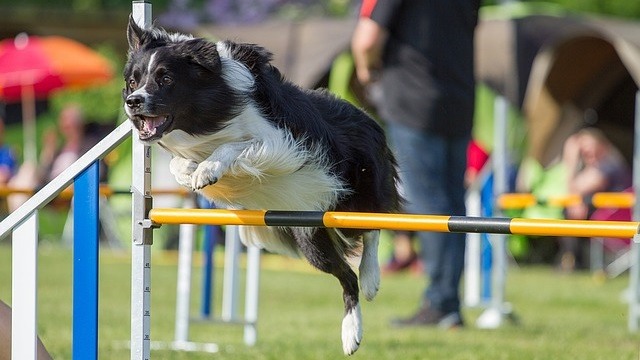
Jump hurdles can be built easily using PVC pipes and joints. You can also create a jump obstacle by holding a hula-hoop off the ground, or even tying a rope so that it is taut between two strong poles.
To create a nice jump set for a cat, design a course that includes jumping from and to furniture, like the couch, bed or coffee table. Cat trees, scratching posts, hoops or ramps work beautifully as well.
Be creative – the only limitation is your pet’s ability to jump, so make sure that you are not placing the jump obstacle too high up. Start with small jumps and work it up if your pet handles it right.
Conclusion
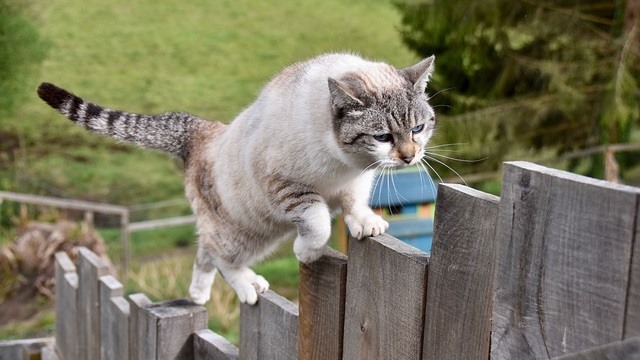
Agility training for dogs and cats will only be fun and delightful as long as both you and your pet enjoy doing it. It’s best to not force any play if it isn’t pleasing for all parts involved. If your bestie is tired or not in the mood, move on to something easier or try again later.
Keeping them motivated and focused on the final goal is also a criteria to make things work. Do not disregard the highly valuable rewards and tons of love and cuddles!
Maven is all about proactive pet care. Be your best friend’s best friend by giving them 24/7, high-quality, industry-leading vet care to improve their mental health, physical health and more. No more frantic googling or unneeded stressful visits to the vet – Maven helps you save hundreds while also ensuring your pet lives the best life possible. Get your kit now!

